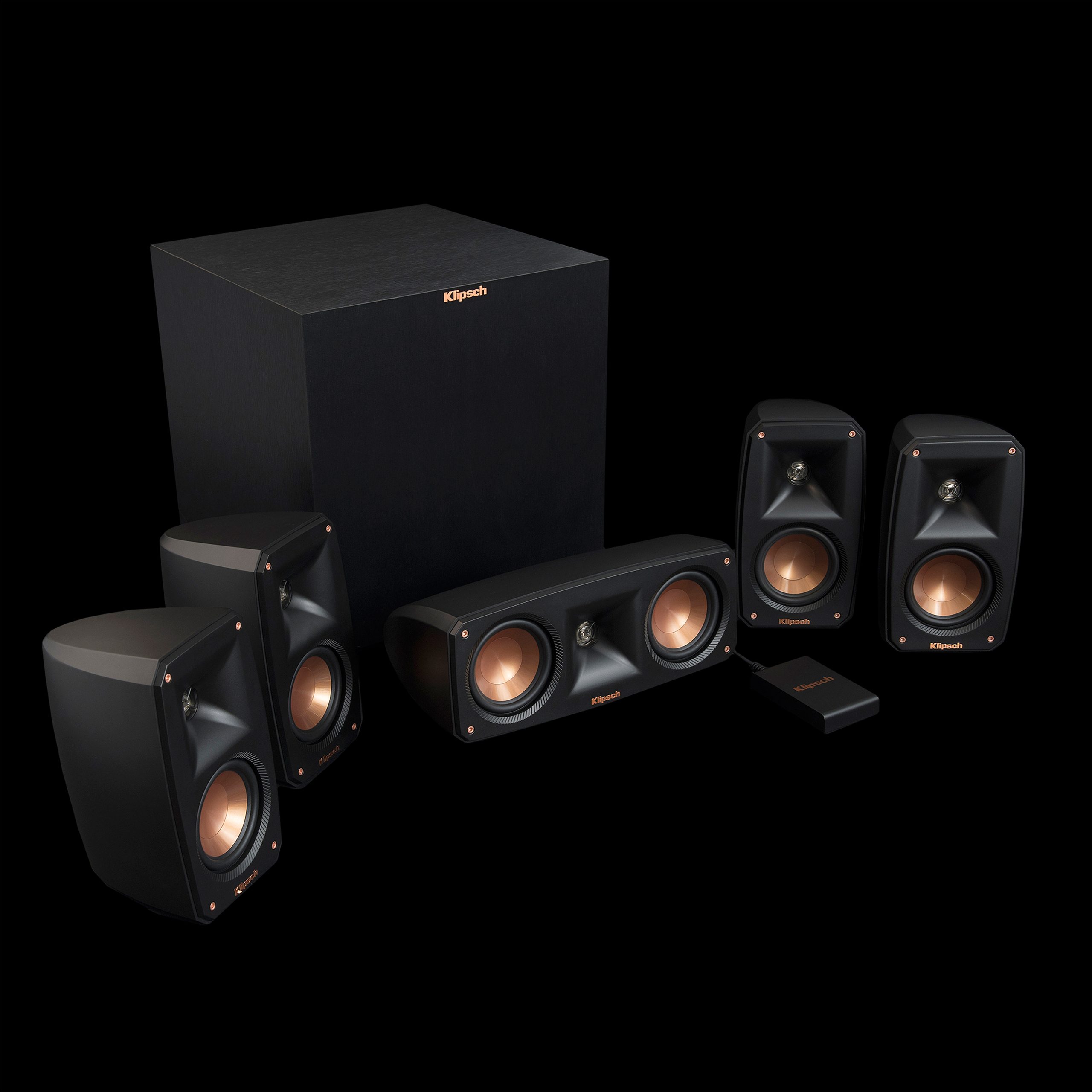
Satellite speakers can take your home theatre to the next level. But only if they’re set up right. Many people make simple mistakes that ruin the experience. The sound feels off, the effects don’t hit, and the voices sound far away.
You may have great speakers, but if the setup is wrong, you won’t get the full value out of them.
Let’s go over the most common mistakes and how to avoid them.
Placing Speakers Too High or Too Low
Satellite speakers work best when they’re at your ear level while seated. That’s how you hear dialogue clearly and feel entirely surrounded by sound. But people often mount them too high on the wall, or place them low on shelves.
This makes the sound skip your ears. You do not hear effects around you, but above or below, which ruins immersion. To correct it, arrange the speakers in such a way that the tweeters are basically at ear level. When wall-mounting, tilt them down a little. In case they are on stands, check that the height is correct for your sitting.
Incorrect Angling
Even if the height is correct, the sound can still feel off if the speakers aren’t angled correctly. Satellite speakers should face toward the listening area, not just point straight out into the room.
Angling them inward, also called toe-in, focuses the sound toward you. If they’re pointed away or too wide apart, the audio feels disconnected. You might hear more from one speaker and less from the other.
Try small adjustments. Sit in your main listening spot, angle both speakers toward that spot, and listen. Even a small change in direction can make the sound tighter and more balanced.
Uneven Spacing
Space is as important as placement and angle. When one speaker is closer to you than the other, the soundstage becomes skewed. One side may be more pronounced or more detailed than the other, which might go into the background.
To fix this, measure the distance from each speaker to your main seat. Try to keep both distances equal. This way, the sound reaches you at the same time, and everything feels centred.
Symmetry helps the speakers work together, not compete with each other.
Putting Speakers Behind Obstacles
Some people hide satellite speakers behind furniture, inside shelves, or too close to walls. That may look tidy, but it blocks the sound. High frequencies, the ones responsible for clarity and detail, get lost fast when they hit an object.
If a speaker is blocked, the sound feels dull or muffled. You might have volume, but not definition.
Leave space around your speakers. Keep them in the open. Don’t let couches, curtains, or décor get in the way. Clear line of sight matters just as much as distance and angle.
Mounting Without Stands or Brackets
Satellite speakers are small, but they still need support. Placing them on a random table or shelf often leads to vibrations or poor positioning. That affects sound quality.
Use heavy, adjustable stands or speaker stands. These assist you to have the proper height and angle. They also avoid the speaker moving, rattling or falling over.
Mounting right makes the system look clean and sound better.
Too Close to Walls or Corners
Walls and corners alter the manner of sound. When the speaker is very close to a wall it reflects the sound too fast. That produces an echo or makes some frequencies too loud When it is at a corner, bass accumulates and becomes boomy.
Satellite speakers don’t need to be far out into the room, but they do need a little breathing room. Even just 1–2 feet away from the wall can improve clarity.
Corners are tempting, but avoid them unless your system is designed for it.
Ignoring the Room’s Shape
Not all rooms are the same. A square room sounds different from a long one. Big windows, glass doors, open spaces; all of these affect how sound moves.
If one side of the room has a curtain and the other side has a window, the sound may feel uneven. The room absorbs and reflects sound differently on each side.
You can’t change the room, but you can adapt your speaker setup. Pay attention to what you hear. Adjust speaker angles or try moving one a little closer or farther. Test until the sound feels balanced.
Skipping Calibration
Many people forget the final step, which is calibration. Even if you place your speakers perfectly, they won’t sound their best until they’re calibrated.
Most modern AV receivers include auto-calibration tools. These measure the distance and volume of each speaker from your seating area. They adjust everything to make sure the sound hits you all at once and at the right level.
Skipping this step often leads to unbalanced sound. One speaker might sound too loud. Another might be delayed. Calibration fixes all of that with just a few minutes of setup.
Using Uneven Cable Lengths
This one gets overlooked. If one speaker has a 2-meter cable and the other has a 5-meter one, there’s a tiny delay. It’s small, but noticeable when the rest of the system is perfect.
Try to use similar cable lengths for both satellite speakers. Don’t coil excess wire as it just adds resistance. Keep it neat, but equal.
Good wiring supports good sound.
Mixing Speaker Brands
Satellite speakers can only work well when they are similar to your main speakers. When you combine brands or models, the sound may be disjointed. A speaker may be brighter than another. Another may be less exciting. This disorients the whole surround sound experience.
Stick to one brand or product line. That ensures the speakers have the same sound signature and blend well together.
Don’t Forget the Subwoofer
While satellite speakers handle mids and highs, the subwoofer handles the lows. It completes the sound. But many people place it randomly, or turn it up too loud to make up for small satellites.
The sub should work with the satellites, not overpower them. Try placing it near the centre of the room or near the front speakers. Avoid corners unless it’s been tuned for that.
Balance matters more than bass.
5 Quick Fixes That Make a Big Difference
- Keep speakers at seated ear level
- Angle them toward your listening spot
- Match the distance between the speakers and your seat
- Avoid blocking sound with furniture or décor
- Run your AV receiver’s auto-calibration
Conclusion
Setting up satellite speakers the right way doesn’t need to be hard. But it does take attention to detail. When everything is placed and tuned correctly, your entire home theater experience changes. You hear every sound the way it was meant to be heard: with clarity, balance, and depth.
To get assistance with the construction or perfecting your home theatre, check out Cinebels. They have decades of experience and exclusive partnerships with the world-class audio brands, so that they can assist you in creating the perfect sound experience in your place.
Frequently Asked Questions
- How high should satellite speakers be?
Satellite speakers must be at ear level when you are seated. This assists you in hearing sound clearly, and the surround effect becomes more realistic. When you mount them on the wall, angle them down a bit towards the listener.
- Are satellite speakers to face forward or inward?
They must be turned inwards to your central sitting area. This produces a more concentrated and balanced soundstage. Toe-in them in a bit enhances clarity and makes effects more immersive.
- Can I mount satellite speakers on a shelf or table?
It is not ideal, but yes. Shelves may impede sound, and vibrations may degrade sound. It is preferable to use appropriate stands or wall mounts that can be adjusted in height and angle.
- Do the satellite speakers have to be the same as the front speakers?
They must be of the same brand and series, where possible. This makes the sound quality of all speakers the same and makes the surround sound more natural and smooth.
- Why is my satellite speaker louder on one side?
This normally occurs as a result of uneven placement or missed calibration. Ensure that the two speakers are at equal distance to your seat and use the auto-calibration of your AV receiver to adjust the speakers.
